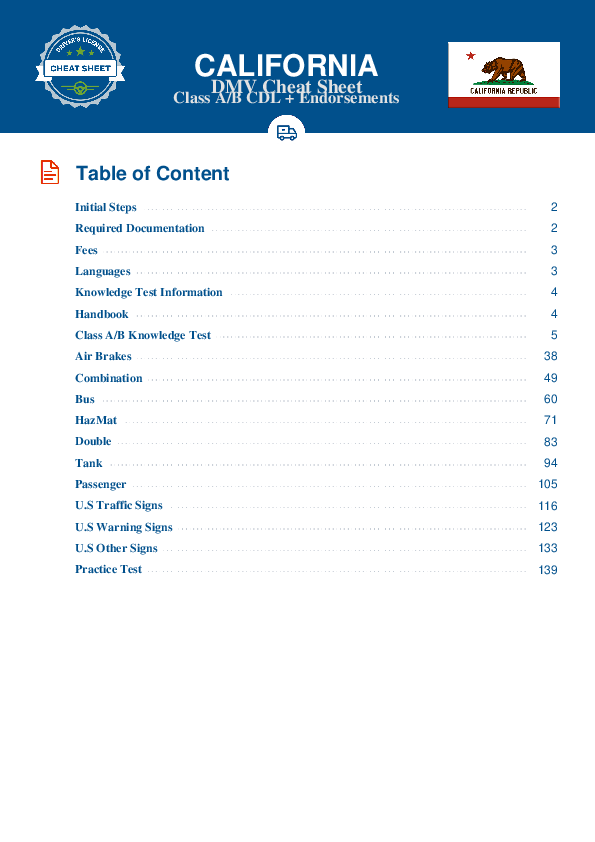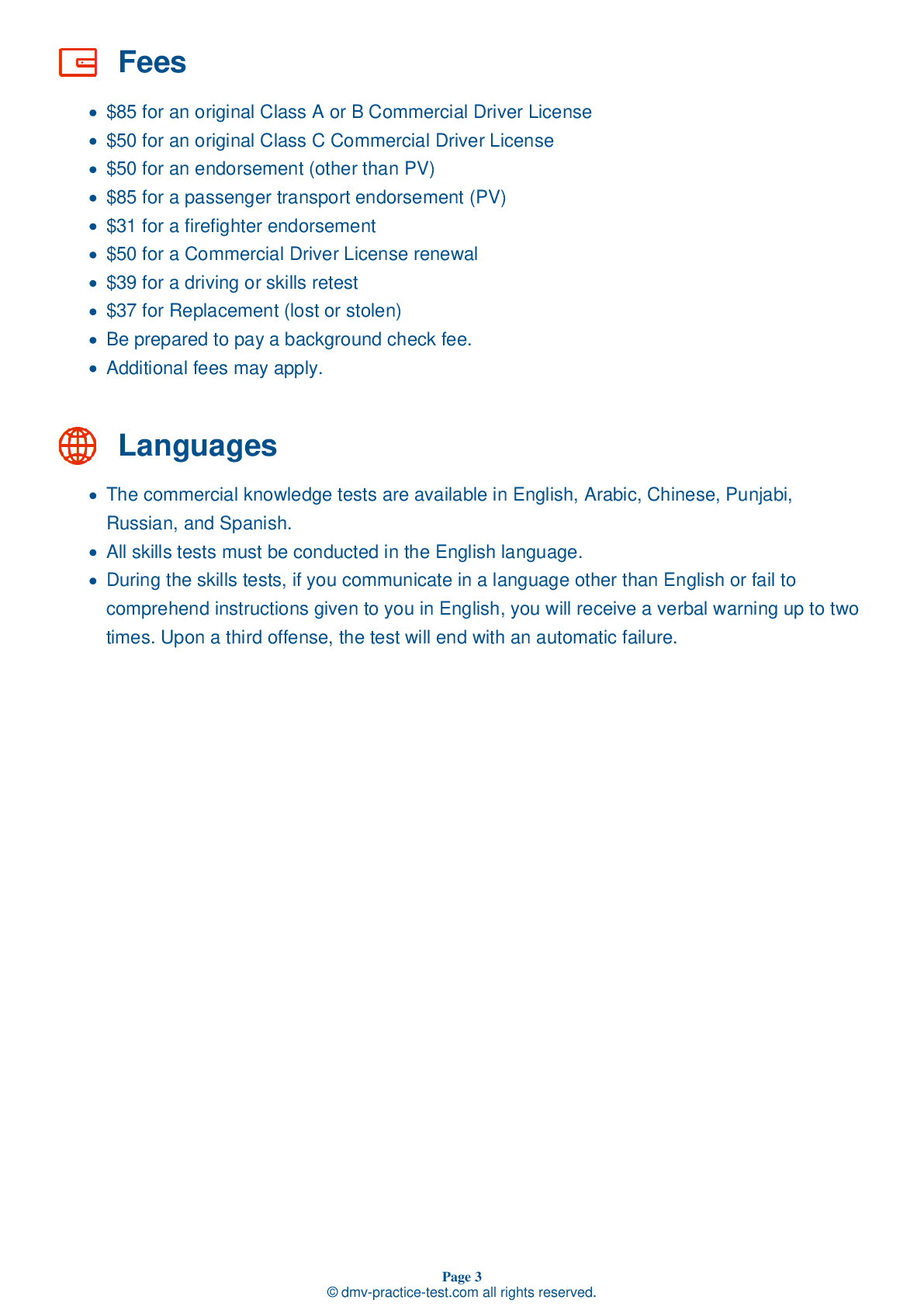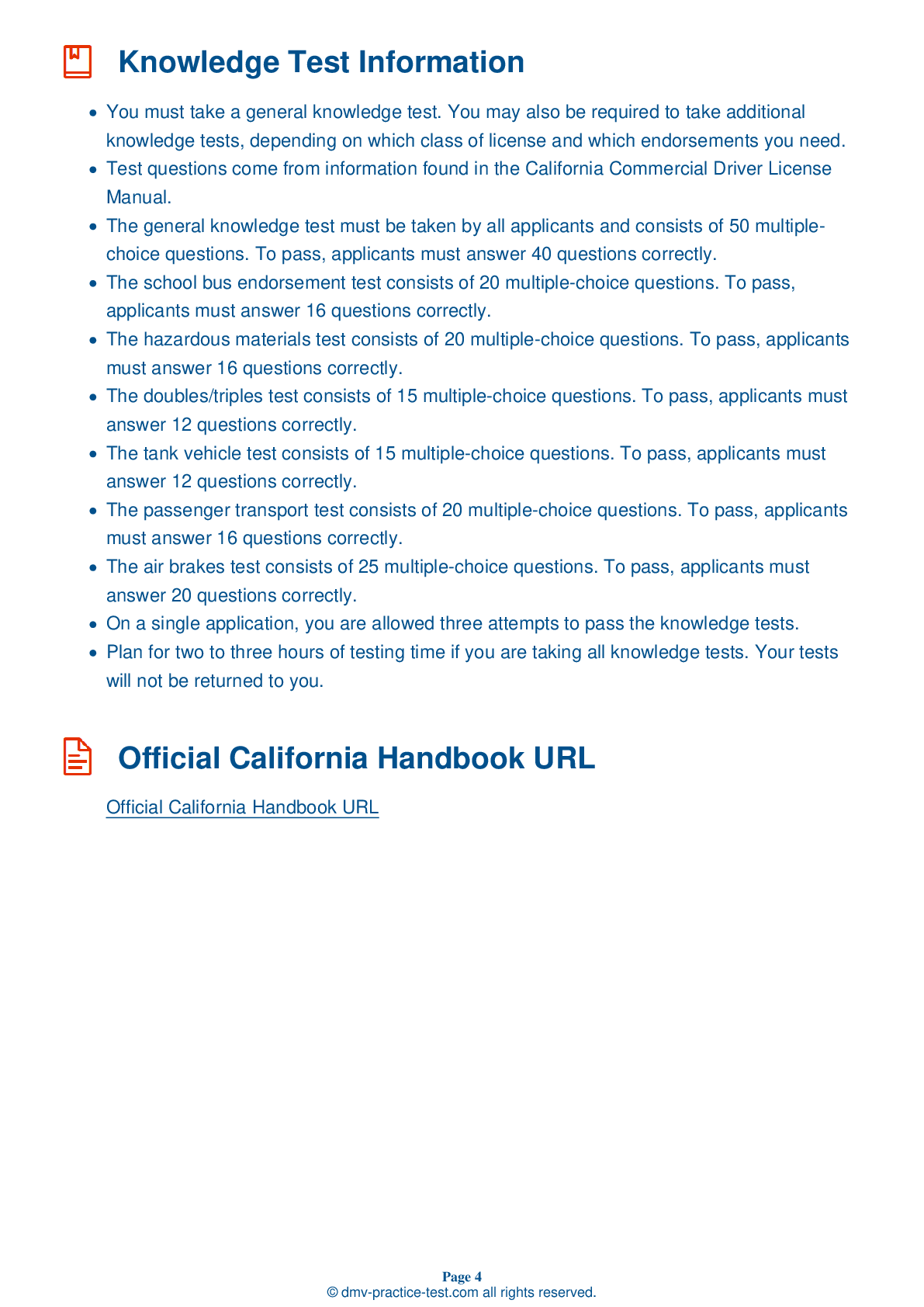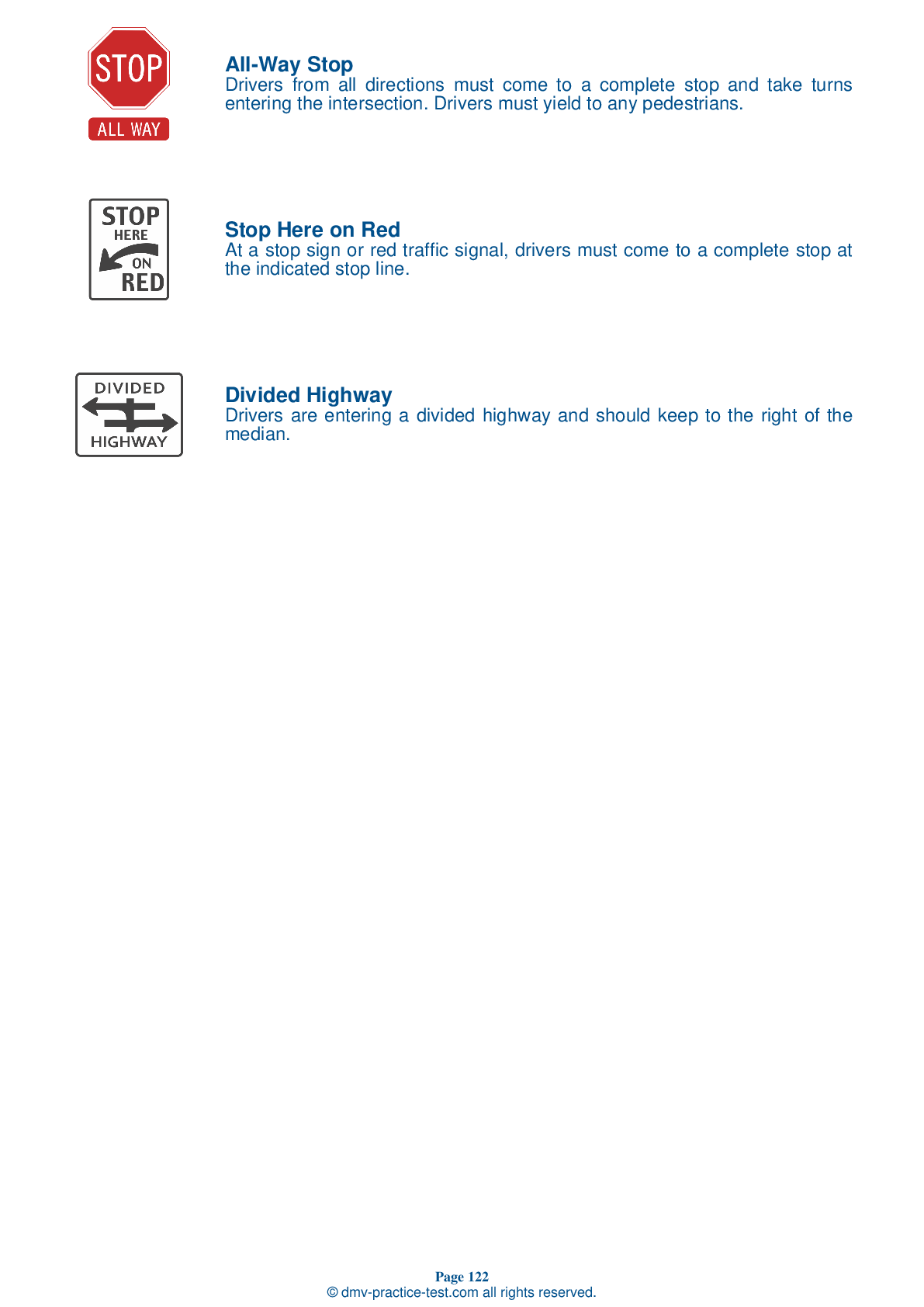Passenger #1
Passenger Endorsement | California 2025 #1 Page 2 of 3
Train for FREE with our California CDL passenger endorsement practice test online. The official exam test consists of several obligatory parts, with all of them checking your knowledge of different blocks of road rules. If you need to obtain a CA DMV passenger endorsement in 2025, practice as much as possible. Free sample tests published on our website will help you check and improve your knowledge and boost your grades. Please bear in mind that DMV requirements for issuing a CDL permit with passenger endorsement may vary from state to state.
20
17
20
8 . In cool weather, as the temperature begins to rise and ice begins to melt:
As the temperature begins to rise and ice on the road begins to melt, the road surface will often become even more slippery. Water from the slight melting will sit on top of the ice, decreasing the available traction even more. Always decrease your speed and drive with caution when traveling on slippery surfaces.
9 . When starting an engine, oil pressure should come up to a normal level:
Look at your truck's gauges when starting the engine. The oil pressure in an engine should come up to a normal level within seconds of the vehicle's engine being started.
10 . What are placards?
Placards, or signs, are placed on the outside of a vehicle carrying hazardous materials to identify the specific hazard class of the cargo being carried.
11 . When inspecting the interior of a bus, you should:
Not waste time looking at the handrails and floor lining.
When inspecting the interior of a bus, you must make sure everything is safe and in proper working condition. Make sure all signaling devices, such as bathroom emergency buzzers, work properly.
12 . The only way to sober up after consuming alcohol is to:
Most alcohol is removed from the body by the liver, which processes alcohol at a fixed rate. Despite popular belief, techniques like drinking black coffee or taking a cold shower will not accelerate this process. The only thing you can do to become sober after drinking is allow your body the time it needs to eliminate the alcohol from your system.
13 . A tread depth of ____ should be in every major groove of a tire that is not in the front of a commercial motor vehicle.
For safe operation, a commercial motor vehicle needs a tread depth of 4/32 of an inch in every major groove on the front tires, and a tread depth of 2/32 of an inch on other tires.
14 . When driving on packed snow, you should reduce your speed by:
Reduce your speed when traveling on surfaces that provide reduced traction. Reduce your speed by one-half or more when traveling on packed snow.
2025 California | Frequently Asked Questions
To secure a CDL Doubles/Triples endorsement in California, you must first possess a valid CDL. Then, you'll need to pass a written knowledge test about pulling double/triple trailers. This test covers topics such as coupling and uncoupling, inspecting doubles and triples, and handling these vehicles. After passing the test, the endorsement will be added to your CDL.
To obtain a CDL Doubles/Triples license in California, you must have a valid Class A CDL. You'll need to pass a written knowledge test specific to double/triple trailers. This test covers topics like coupling and uncoupling, inspecting doubles and triples, and handling. You don't need a special skills test for this endorsement.
While California doesn't require specific training to get a CDL Doubles/Triples endorsement, it's beneficial. Training can help you understand how to safely operate, couple/uncouple, and inspect these vehicles. You'll need to pass a written knowledge test, so studying is essential. Practical experience driving larger vehicles can also be beneficial for handling doubles/triples.
Yes, in California, to obtain a CDL Doubles/Triples endorsement, you must pass a written knowledge test specifically designed for this endorsement. The test covers topics such as safely pulling double/triple trailers, coupling and uncoupling, and inspecting these types of vehicles. This is in addition to the general CDL tests.
The CDL Doubles/Triples endorsement test in California is a written knowledge test, not a skills test. Therefore, you won't need to demonstrate any specific maneuvers. However, the test does cover topics such as coupling and uncoupling, inspecting doubles and triples, and handling these types of vehicles. Understanding these topics will be crucial to passing the test.
No, it's not permissible to operate double/triple trailers without a valid CDL Doubles/Triples endorsement in California. This endorsement is required by law for drivers who wish to operate a vehicle towing two or three trailers. Driving without the appropriate license or endorsement can result in serious penalties, including fines and suspension of your CDL.
You can add the CDL Doubles/Triples endorsement to your existing commercial driver's license. You don't need to initiate a new application for a license. However, you will need to pass the specific written test for the endorsement and pay any associated fees. Remember, the endorsement is added to your CDL, not your regular driver's license.
Yes, there are limitations for drivers with a CDL Doubles/Triples endorsement. They must only drive vehicles that they are licensed for, and must adhere to the maximum weight and length restrictions outlined by California law. Also, they must follow safety regulations such as conducting pre-trip inspections and adhering to hours-of-service rules. Violation of these rules can result in penalties or loss of the endorsement.
The maximum legal weight for any vehicle in California is 80,000 pounds, including double/triple trailers. The maximum legal length for a two-trailer combination is 75 feet, while a three-trailer combination is 65 feet. However, the length of the cargo in the trailer cannot exceed 53 feet. Exceeding these limits may require a special permit and could result in penalties.
Yes, drivers with a CDL Doubles/Triples endorsement must adhere to specific safety guidelines. These include conducting regular pre-trip inspections, securing cargo properly, maintaining safe following distances, and understanding the high rollover risk. Drivers must also comply with hours-of-service regulations to prevent fatigue-related accidents. Violating these safety rules can result in penalties or loss of endorsement.



